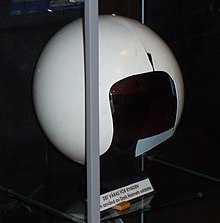
Melvin James Brooks is an American actor, comedian, filmmaker, songwriter, and playwright. With a career spanning over seven decades, Brooks is known as a writer and director of a variety of successful broad farces and parodies. A recipient of numerous accolades, he is one of 19 entertainers to win the EGOT, which includes an Emmy Award, a Grammy Award, an Academy Award, and a Tony Award. He received a Kennedy Center Honor in 2009, a Hollywood Walk of Fame star in 2010, the AFI Life Achievement Award in 2013, a British Film Institute Fellowship in 2015, a National Medal of Arts in 2016, a BAFTA Fellowship in 2017, and the Honorary Academy Award in 2024.

What's Opera, Doc? is a 1957 American Warner Bros. Merrie Melodies cartoon directed by Chuck Jones and written by Michael Maltese. The short was released on July 6, 1957, and stars Bugs Bunny and Elmer Fudd.
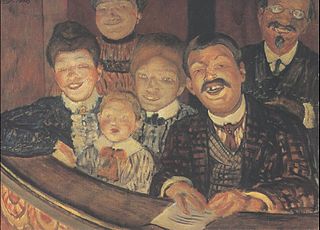
Farce is a comedy that seeks to entertain an audience through situations that are highly exaggerated, extravagant, ridiculous, absurd, and improbable. Farce is also characterized by heavy use of physical humor; the use of deliberate absurdity or nonsense; satire, parody, and mockery of real-life situations, people, events, and interactions; unlikely and humorous instances of miscommunication; ludicrous, improbable, and exaggerated characters; and broadly stylized performances.

Second City Television, commonly shortened to SCTV and later known as SCTV Network and SCTV Channel, is a Canadian television sketch comedy show that ran intermittently between 1976 and 1984. It was created as an offshoot from Toronto's Second City troupe. It is a rare example of a Canadian show that moved successfully to U.S. television, where it aired on NBC in 1981–1983.
Lone Star, Lone Starr, Lone Stars or Lonestar may also refer to:

Young Frankenstein is a 1974 American comedy horror film directed by Mel Brooks. The screenplay was co-written by Brooks and Gene Wilder. Wilder also starred in the lead role as the title character, a descendant of the infamous Dr. Victor Frankenstein. Peter Boyle portrayed the monster. The film co-stars Teri Garr, Cloris Leachman, Marty Feldman, Madeline Kahn, Kenneth Mars, Richard Haydn, and Gene Hackman.

An escape pod, escape capsule, life capsule, or lifepod is a capsule or craft, usually only big enough for one person, used to escape from a vessel in an emergency. An escape ship is a larger, more complete craft also used for the same purpose. Escape pods are ubiquitous in science fiction but are only used in a few real vehicles.

Frederick Allan Moranis is a Canadian actor, comedian, musician, songwriter, writer, and producer.

Robin Hood: Men in Tights is a 1993 adventure comedy film and a parody of the Robin Hood story. The film was produced and directed by Mel Brooks, co-written by Brooks, Evan Chandler, and J. David Shapiro based on a story by Chandler and Shapiro, and stars Cary Elwes, Richard Lewis, and Dave Chappelle in his film debut. It includes frequent comedic references to previous Robin Hood films, particularly Prince of Thieves, and the 1938 Errol Flynn adaptation The Adventures of Robin Hood. Brooks himself had previously created the short-lived sitcom When Things Were Rotten in the mid-1970s, which also spoofed the Robin Hood legend.
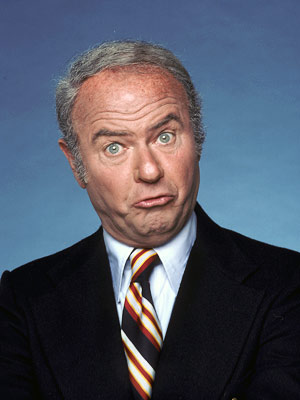
Harvey Herschel Korman was an American actor and comedian who performed in television and film productions. He is best remembered as a main cast member alongside Carol Burnett, Tim Conway and Vicki Lawrence on the CBS sketch comedy series The Carol Burnett Show (1967–1977) for which he won four Primetime Emmy Awards and a Golden Globe Award.

Daphne Eurydice Zuniga is an American actress. She made her film debut in the 1982 slasher film The Dorm That Dripped Blood (1982) at the age of 19, followed by a lead role in another slasher film The Initiation (1984) two years later.

In the fictional Star Trek universe, the Vulcan nerve pinch is a fictional technique used mainly by Vulcans to render unconsciousness by pinching a pressure point at the base of the victim's neck.
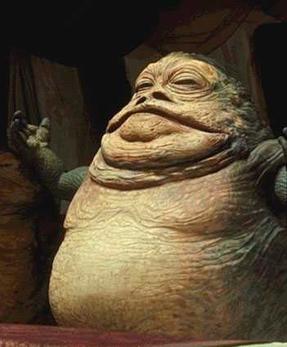
The Hutts are an alien species in the Star Wars franchise. They are rotund, voracious and grotesque-looking slug-like creatures with a predisposition to being leaders in organized crime. The most famous Hutt and the first to be depicted was Jabba the Hutt in the films Return of the Jedi, the Special Edition release of A New Hope, and The Phantom Menace. Jabba and numerous other Hutts appear in various works of the Star Wars expanded universe, which greatly elaborates on their history, culture and role in galactic society.

Hardware Wars is a 1978 American short science fiction parody film in the form of a teaser trailer for a fictitious science fiction film that parodies Star Wars. The 13-minute film, which was released almost 18 months after Star Wars, mainly consisted of inside jokes and visual puns that heavily depended upon audience familiarity with the original. The theme song is Richard Wagner's "Ride of the Valkyries".

The Silence of the Hams is a 1994 comedy thriller film written by, directed by, and starring Italian comedian Ezio Greggio. It is a parody of many popular thriller and horror films, notably The Silence of the Lambs and Psycho. Along with Greggio, it features an ensemble cast of Dom DeLuise, Billy Zane, Joanna Pacuła, Charlene Tilton and Martin Balsam.

Thomas Edward Meehan was an American playwright. He wrote the books for the musicals Annie, The Producers, Hairspray, Young Frankenstein and Cry-Baby. He co-wrote the books for Elf: The Musical and Limelight: The Story of Charlie Chaplin.

George Lucas's science fiction multi-film Star Wars saga has had a significant impact on modern popular culture. Star Wars references are deeply embedded in popular culture; references to the main characters and themes of Star Wars are casually made in many English-speaking countries with the assumption that others will understand the reference. Darth Vader has become an iconic villain, while characters such as Luke Skywalker, Han Solo, Princess Leia, Chewbacca, C-3PO and R2-D2 have all become widely recognized characters around the world. Phrases such as "evil empire", "May the Force be with you", Jedi mind trick and "I am your father" have become part of the popular lexicon. The first Star Wars film in 1977 was a cultural unifier, enjoyed by a wide spectrum of people.
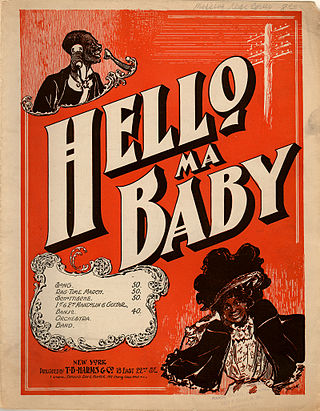
"Hello! Ma Baby" is a Tin Pan Alley song written in 1899 by the songwriting team of Joseph E. Howard and Ida Emerson, known as "Howard and Emerson". Its subject is a man who has a girlfriend he knows only through the telephone. At the time, telephones were relatively novel, present in fewer than 10% of U.S. households, and this was the first well-known song to refer to the device. Additionally, the word "Hello" itself was primarily associated with telephone use after Edison's utterance—by 1889, "Hello Girl" was slang for a telephone operator—though it later became a general greeting for all situations.

Spaceballs: The Animated Series, also known as Spaceballs: The Series, is an adult animated television series that premiered in 2008 on G4 and Canada's Super Channel, and is loosely based on the parody science fiction film Spaceballs. Similarly to how the original film parodied the original Star Wars films and the Star Trek universe, each episode of the series parodies a different film or other aspect of popular culture, such as the Star Wars prequel trilogy, The Lord of the Rings, or the Grand Theft Auto video games.

William Pullman is an American actor. After graduating with a Master of Fine Arts degree in theater, he was an adjunct professor at Montana State University before deciding to pursue acting. He made his film debut in Ruthless People (1986), and starred in Spaceballs (1987), The Accidental Tourist (1988), Sleepless in Seattle (1993), While You Were Sleeping (1995), Casper (1995), Independence Day (1996), Lost Highway (1997), and Lake Placid (1999). He has appeared frequently on television, usually in TV films. Starting in the 2000s he has also acted in miniseries and regular series, such as Torchwood (2011), starring roles in 1600 Penn (2012–13) and The Sinner (2017–2021). In 2021, he had a recurring role in the miniseries Halston.

